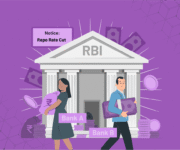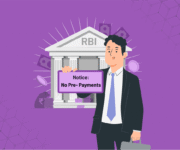There’s no doubt that RBI’s rate hike is a harbinger of changes in the financial world. During an unexpected policy announcement, the RBI increased repo rates by 40 base points to 4.4 percent in May and 4.9 percent in June. Given the soaring inflation across the country, RBI is expected to raise the rates again. As a result, the Buy Now Pay Later industry, one of the newest but fastest growing sectors in consumer finance, is certainly under scrutiny.
While BNPL might be a new addition to your vocab, the concept has existed for ages. Layaway credit, instalment plans, credit cards, and the khata system at grocery stores are all the same credit tools in different ways. BNPL is the latest version with a tech twist. It allows consumers the flexibility to divide payments conveniently for little or no expense.
How does the BNPL Model work?
With the payment option “Buy Now, Pay Later,” you can purchase without pinching your pockets. Typically, you sign up with a business that offers this service, and that business makes the payment for you.
However, after the lender makes a payment on your behalf, you must make the required repayments within a predetermined time frame. In contrast to a personal loan, most BNPL programs do not charge interest. You have two payment options: a lump sum payment or free Equated Monthly Instalments (EMIs). The lender can charge interest if you’re unable to make the payment within the given time.
The BNPL sector has ballooned after the global pandemic pushed the use of the internet and smartphones to its zenith. Another reason the BNPL found solid ground in the Indian market is low credit penetration. There are only roughly 3 credit card users for every 100 card users in India (globalnewswire).
Thus, BNPL became the “credit product” for users as much as it was a convenience product. The industry has entirely changed due to the flexibility that BNPL schemes provide, especially for younger consumers willing to trade traditional credit cards for more streamlined BNPL schemes..
However, the days of glory seem to be coming to an end. The conditions that drove the industry’s rapid expansion are dying as consumers cut down on their spending, and rising interest rates drive up the borrowing costs of BNPL firms, reducing their profitability.
What does the rate hike mean for the BNPL Model?
BNPL payments are mostly interest-less, and the rates they charge later are minimal. But most companies that provide Buy Now, Pay Later services are not financial institutions and thus don’t have access to huge deposits. So in most cases, companies must borrow these funds to make loans.
But as RBI hikes repo rates and banks chase to keep pace, the interest rates connected with borrowing those funds rise. As a result, it becomes more expensive for them to lend money to consumers, which puts pressure on their profit margins.
BNPL industries earn their revenue from two sources:
1. From Sellers
To avail of BNPL as an alternative payment option, vendors must pay a transaction charge like any other medium at a specific rate. BNPL companies also work to bring more consumer traffic to the vendor. They sell their services, claiming convenience and ease of transactions. This would further convince more vendors to buy into the BNPL service, thus increasing revenue.
2. From Customers
Although it is not widespread, third-party BNPL providers perform light credit checks to prevent lending money to users with bad credit history. BNPL also monetizes its customers by sometimes charging interest or late fees.
The BNPL industry is yet to prove its sustainability. With the repo rate hike, what could change?
The businesses will try to create more friction between customer interaction by introducing checks. These checks will screen its users for creditworthiness. This friction could tip the scales for merchants as BNPL services drive consumers to their websites.
Small BNPL players could potentially run out of business or merge with tech giants to sustain themselves.
Conclusion
India’s BNPL sector sits at a whopping $3-3.5 billion today but could potentially expand to $45-50 billion by 2026 (Decentro). The rate hike is going to impact the sector one way or another. Any lending product risks higher default rates whenever the economic cycle declines. But BNPL firms may have a safe cover in their ability to control what kind of line of credit they offer consumers, typically shorter-term loans.
If you’re looking for a loan management system, you’re at the right place. Finezza offers easy-to-use loan cycle management solutions to level up your financial game. Get in touch with us today.




Leave a Reply